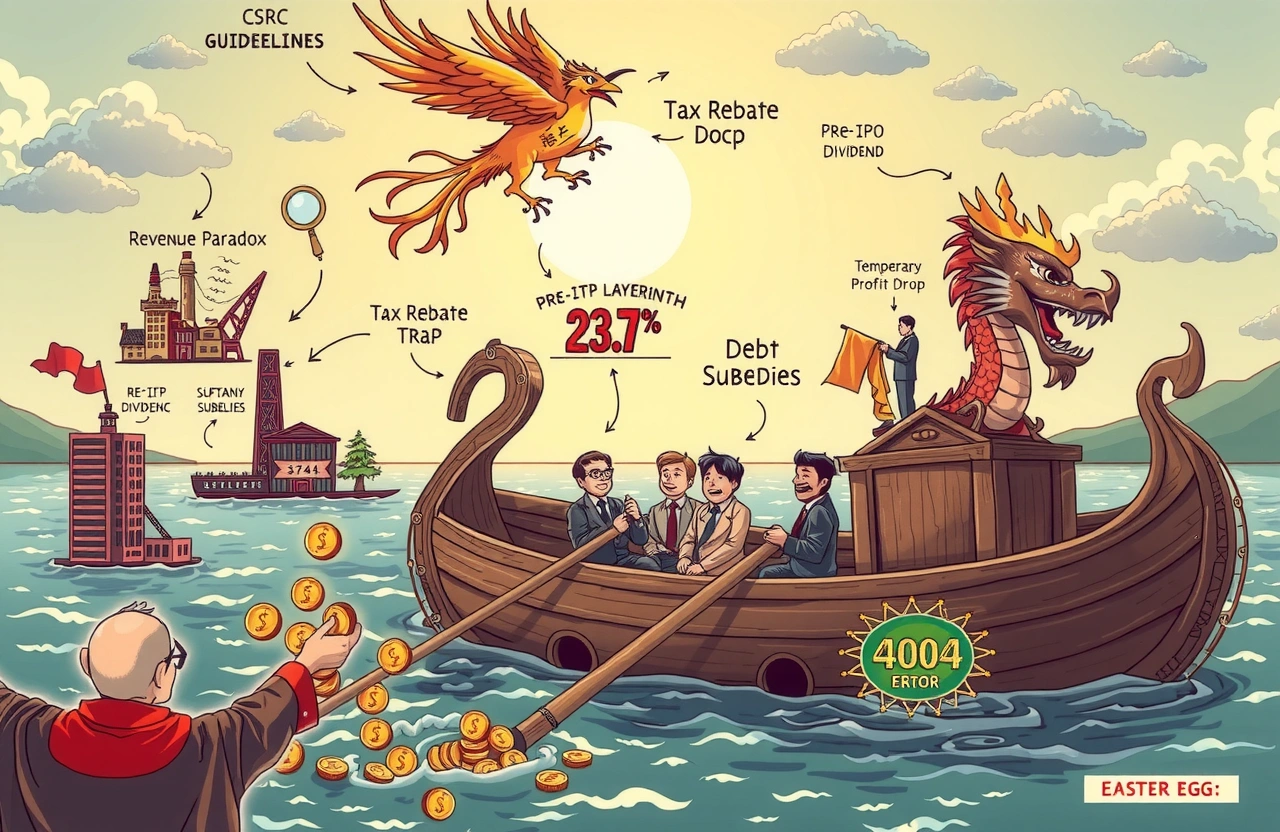Investors face heightened regulatory scrutiny as China’s capital markets experience a wave of abrupt IPO withdrawals this July. Six companies terminated listings in just three days – from semiconductor manufacturers to diabetic device suppliers – revealing systemic vulnerabilities like inflated profits through tax mechanisms and unstable ownership structures.
July’s IPO Termination Surge
The first week of July witnessed six companies abruptly cancel exchange applications:
– Xiangyuan New Materials: Polyurethane chain extender producer
– Chaowei Electronics: Semiconductor firm seeking 727M yuan funding
– Feichao Materials: Industrial filtration specialist
– Shanghai Yangtong: Power chip developer
– Zhongxin Jingyuan: Wafer manufacturer with 5.47B yuan plan
– Hengsheng Medicine: Blood glucose monitor maker
Regulatory Red Flags
The Shanghai and Shenzhen exchanges uniformly cited “expired financial documents” or “sponsor withdrawals” for cancellations. Market analysts note tightened oversight on:
– Firms reliant on temporary subsidies
– Sudden pre-IPO profit surges
– Inconsistent cash flow patterns
Dongguan Securities: Shareholder Flight Threatens Decade-Long IPO
China’s longest-running IPO saga faces collapse as major shareholder Jinlong Co. plans complete exit after nine years of delays.
Financial Decline
Dongguan Securities’ newly disclosed 2022-2023 reports show:
– Revenue fell 10.2% year-over-year
– Net profit dropped 19%
– Projected mid-2024 declines continue trend
Ownership Exodus
Jinlong Co. initially attempted 20% divestment in November 2023. By December, plans escalated to full 40% stake sale citing:
– High debt obligations
– Cash flow deterioration
– Operational instability
The withdrawal follows three prior application suspensions since 2015.
Yongqi Auto’s Dependency Trap
The bicycle manufacturer’s IPO cancellation laid bare perilous financial engineering through tax incentives.
Tax Rebate Reliance
Export subsidies accounted for:
– 196% of 2019 profits
– 103% of 2020 profits
– 66% of 2021 profits
– 85% of mid-2022 profits
Contrasting Financial Indicators
Despite reported profitability growth:
– Operating cash flow plummeted from 127M yuan (2019) to -38M yuan (2021)
– 1.42B yuan cash reserves couldn’t cover 2.56B yuan short-term debt
Pre-IPO Cash Extraction
Before application, Yongqi distributed:
– 31.2M yuan (2020)
– 39M yuan (2021)
– 78M yuan (2022)
Totaling 1.48B yuan while requesting 100M yuan liquidity injection through IPO.
EV Maker Neta’s Expansion Gambit
Hezhong New Energy’s Hong Kong listing attempt reveals brutal electric vehicle economics.
Cumulative Losses Mounting
The Neta Auto parent disclosed:
– 18.3B yuan net losses (2021-2023)
– Negative operating cash flow exceeding 127.5B yuan
– Current liabilities (16.1B yuan) exceeding assets (14.1B yuan)
Domestic Contraction
2024 deliveries dropped 13.85% year-over-year to 53,800 vehicles while rivals Xpeng and Li Auto grew over 20%.
Southeast Asian Pivot
Overseas revenue share jumped from 1.8% (2022) to 12% (2023), with Thailand becoming critical market amid:
– 17,019 vehicles exported
– 1.62B yuan foreign income
Qutang’s Fourth IPO Attempt
The gaming social platform’s June 27th application followed three rejections since 2021 amid contradictory business models.
Revenue Paradox
Qutang champions decentralized user engagement but relies on:
– Broker institutions (65.33% revenue)
– Room hosts (25.58% revenue)
Just 77,000 users (1.62%) captured 85% of 2.55B yuan tip income.
Financial Decline
2023 metrics worsened:
– Revenue down 5.2% to 3.23B yuan
– Gross profit down 9.28%
– Adjusted net profit fell 7.89%
Banking Sector’s Listing Laggard
Hengfeng Bank remains among China’s two unlisted joint-stock banks despite decade-long IPO pursuit.
Growth Stagnation
While 2023 revenue reached 25.3B yuan, net profits plunged 23.7% year-over-year. Historical patterns reveal:
– Declining revenue growth: 52.8% (2020) → 13.6% (2021) → 5.2% (2022)
– Slowing profit expansion: 703.3% (2020) → 20.2% (2021) → 5.8% (2022)
Asset Quality Concerns
With 1.44T yuan assets, Hengfeng trails smallest listed peer Zhejiang Bank’s 3.14T yuan portfolio – highlighting scale disadvantages.
Eiffel’s Data Discrepancies
The bathroom fixture maker’s suspended listing application exposed problematic disclosures.
Inconsistent Metrics
Prospectus discrepancies included:
– Claimed 2022 revenue: 762.2M yuan
– Local government records: 710.4M yuan
– Reported headcount: 1,864 employees
– Recruitment materials: 1,700 employees
Questionable Compliance
Aifenda’s (艾芬达) identical reproduction of rival Wan Dekai’s expense ratios sparked plagiarism allegations:
– Copied figures: 1.28% (2020), 1.97% (2021)
– Variance under 0.01% from original filings
IPO Preparation Checklist
The recent termination cases suggest five audit focus areas:
– Core profit sustainability (above tax/rebate mechanisms)
– Ownership stability verification
– International expansion justification
– Headcount/revenue documentation consistency
– Pre-IPO dividend impact statements
Regulatory Evolution
Shenzhen and Shanghai exchanges now target:
– One-time revenue sources
– Cash flow-to-profit divergence
– Stakeholder commitment uncertainties
These IPO withdrawals expose Chinese markets’ intensifying standards. Investors gain protection through rigorous scrutiny – while companies face pressure to strengthen fundamentals before listing. Review prospectus footnotes intensely: temporary advantages often mask permanent vulnerabilities.
Due Diligence Step: Download CSRC filing guidelines at [Insert Link] for application requirements.



